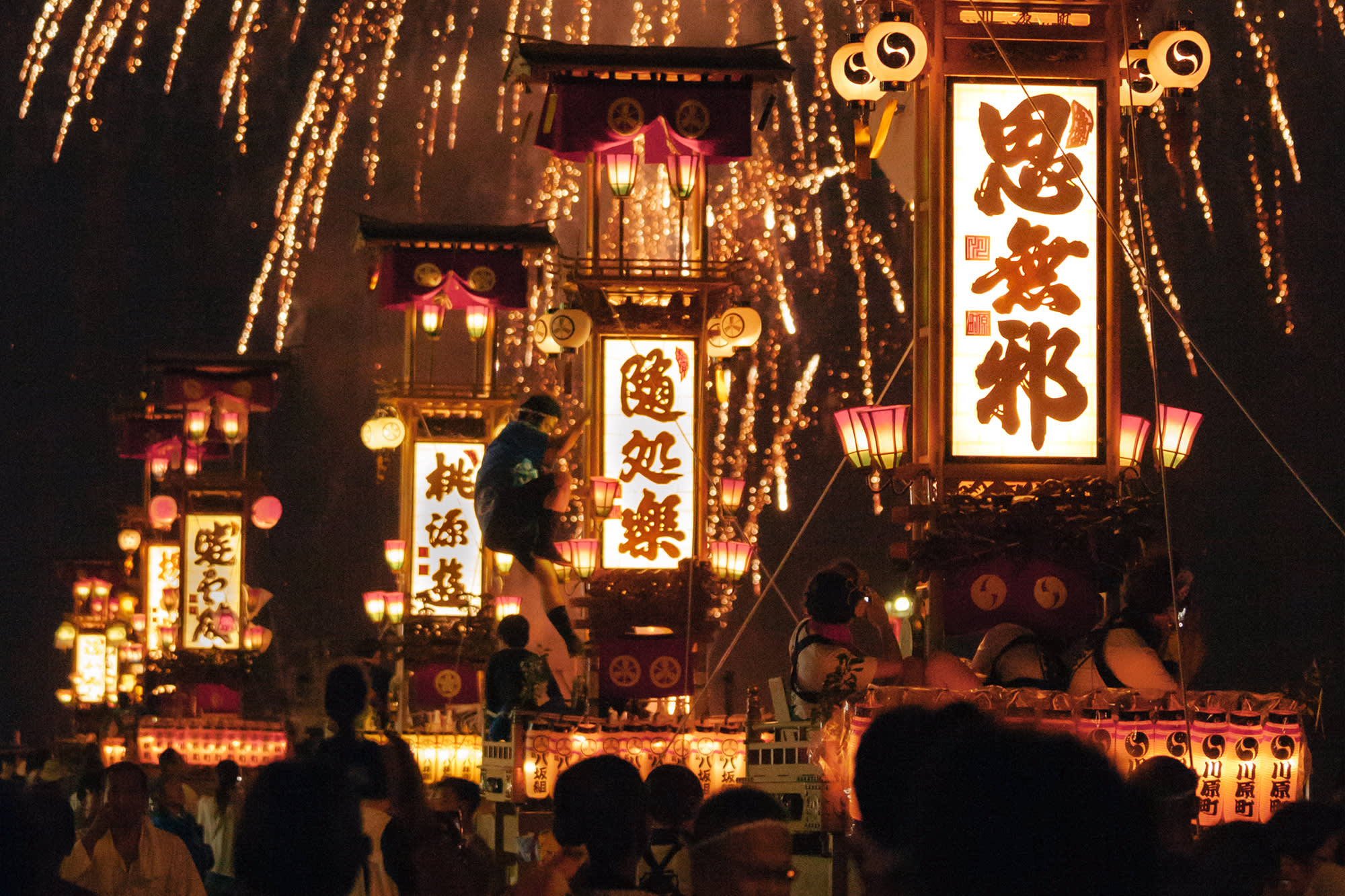Abare Matsuri (The "Fire & Violence Festival")

Why It’s Worth the Ride
Held in early July in Ushitsu, Noto Town, the Abare Matsuri is 100% worth the ride!
The name says a lot. “Abare” means rampage, and this festival lives up to it in the most Noto way possible. Floats are smashed. Torches are hurled. Barrels of fire are swung around like giant sparklers.
It’s rowdy, loud, and completely unfiltered, nothing polished for tourists here. Locals carry kiriko lantern floats (massive wooden structures lit from the inside) through the streets while teams bash them, burn them, and throw themselves into the chaos like it's a full-contact sport.
It’s a celebration of resilience, fire, and a kind of ritualized destruction that somehow ends in renewal. Very on-brand for a rugged peninsula that juts out into the Sea of Japan like it has something to prove.
The Ride There: Coastal Loops and Cliff Roads
Riding to Ushitsu means tracing the Noto Peninsula’s jagged edges, often with the sea right beside the tire. Coming up from Kanazawa, take the Noto Satoyama Kaido to cut through the base, then jump off onto smaller coastal roads that wrap tightly around fishing villages and rocky capes.
The real fun starts on the west coast, where Route 249 hugs sea cliffs, rolls through terraced rice fields, and passes wave-battered coves. It’s remote, scenic, and rarely busy.
Don’t miss the Senmaida rice terraces near Wajima or the Mitsukejima rock ("Battleship Rock") near Suzu.
Festival Vibe: Controlled Chaos
Ushitsu is small, but the energy during Abare Matsuri is massive. Expect:
- Fire barrels swinging just a bit too close for comfort
- Locals cheering and shouting from rooftops
- Taiko drums echoing down tight alleyways
- A lot of yelling, a lot of heat, and zero pretense
It’s not cute, it’s cathartic. And it feels like it belongs exactly where it is, on the edge of Japan, surrounded by black sea and dark sky.
Food: Rustic, Salty, and Sea-Driven
Festival food in Noto leans heavily on what’s pulled from the ocean that morning.
- Grilled squid on a stick: Charred, salty, and everywhere
- Ishiri-based dishes: Local fish sauce made from squid innards, used in soups and grilled meats
- Wagashi with seaweed: Odd, but it works
- Local sake flows freely, and there’s always someone ready to hand over a paper cup and toast a stranger
Bonus: Post-Festival Wind Down
The beauty of riding the Noto Peninsula is that it never really gets crowded. After the fire and fury of Abare Matsuri, it’s easy to wind down by heading north or east, coastal camping spots, tiny fishing ports, and open roads are everywhere.
Consider a ride up to Suzu, then loop around the tip of the peninsula along Route 28, which runs so close to the sea that the spray sometimes hits the road. Sleepy, scenic, and a complete contrast to the chaos of the night before.

